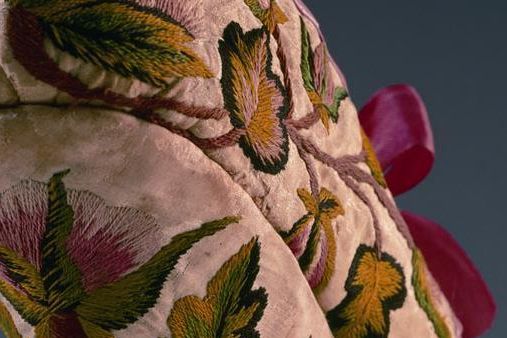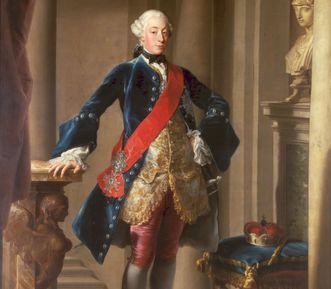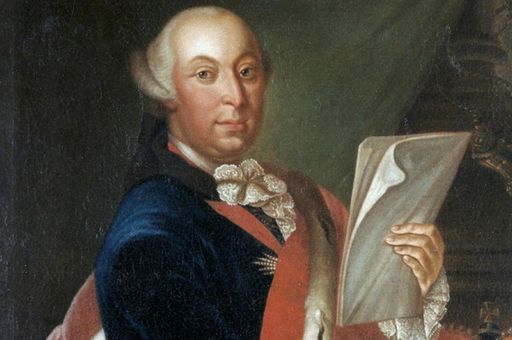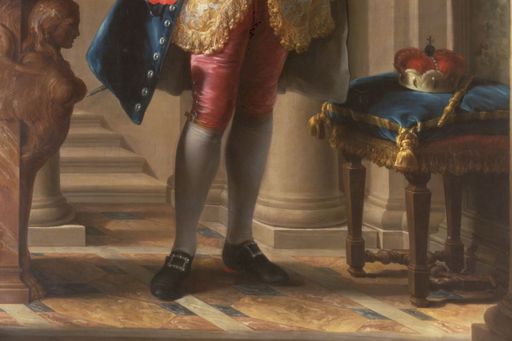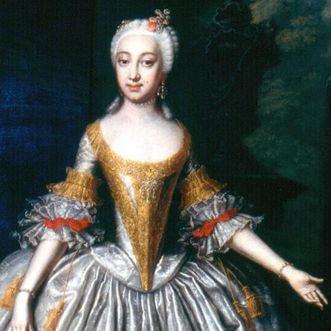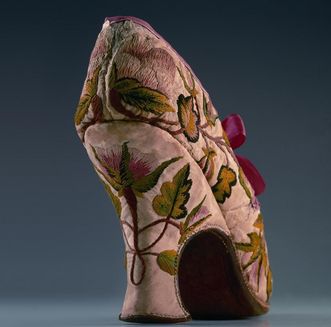A men's suit
A complete men's suit in the Rococo period consisted of knee breeches, called "culottes" in French, a vest and a long coat, or "justacorps." This was often worn open and was cut so that the lavishly embroidered vest was well visible. After the mid-18th century, the justacorps became simpler in cut and elaborateness. Ornate buttons were an important element in men's clothing. Depending on the wearer, they might be made of gold or gemstones.



